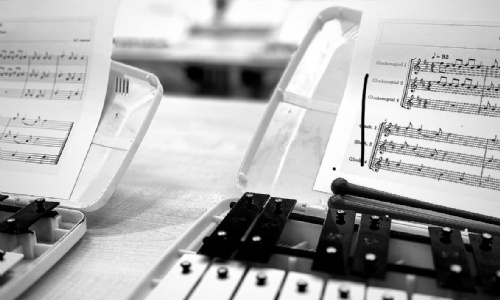Embracing Orff Arrangements in Our Kodály Curriculum

At the culmination of each unit in our Kodály music curriculum, our students engage in a simple Orff arrangement of a piece they’ve been studying. This practice has become a cornerstone of our teaching approach, yielding remarkable educational and developmental benefits.
Orff arrangements are musical pieces structured for performance using the Orff Schulwerk approach, an innovative method of music education developed by composer Carl Orff and his collaborator Gunild Keetman. These arrangements typically involve a variety of percussion instruments, such as glockenspiels, drums, and other pitched and unpitched percussion instruments. The key feature of Orff arrangements is their simplicity and accessibility. Designed with children and beginners in mind, they often feature straightforward, repetitive patterns that are easy to learn and play, making them ideal for young musicians.
Orff arrangements seamlessly integrate with the Kodály methodology, creating a holistic musical experience. The Orff approach, with its emphasis on movement, percussion, and active participation, complements the Kodály focus on vocal training and musical literacy. By merging these methodologies, we craft a rich, engaging, and multifaceted learning environment.
Students show heightened enthusiasm when they transition from vocal exercises and solfège to instrumental play. The tangible act of playing instruments adds a new dimension to their musical journey, keeping their interest alive. The physicality of Orff instruments caters to kinaesthetic learners. The act of striking bars and drums helps reinforce rhythmic and melodic concepts introduced during the unit. This multisensory approach ensures that learning is not just theoretical but embodied and experiential.
Orff arrangements necessitate ensemble playing, fostering a sense of teamwork. Students learn to listen to each other, synchronise their parts, and appreciate the collective effort required to create music. This cooperative learning environment builds social skills and a sense of community. Performing an Orff arrangement at the end of each unit serves as a milestone. It allows students to showcase their progress and celebrate their achievements.
The transition from vocal work to instrumental performance requires students to apply their knowledge in a new context, reinforcing their understanding and helping to solidify musical concepts. They recognise patterns, apply rhythmic accuracy, and experiment with dynamics and expression. The playful nature of Orff instruments, combined with the structured learning of Kodály, ensures that music education is both rigorous and delightful.
